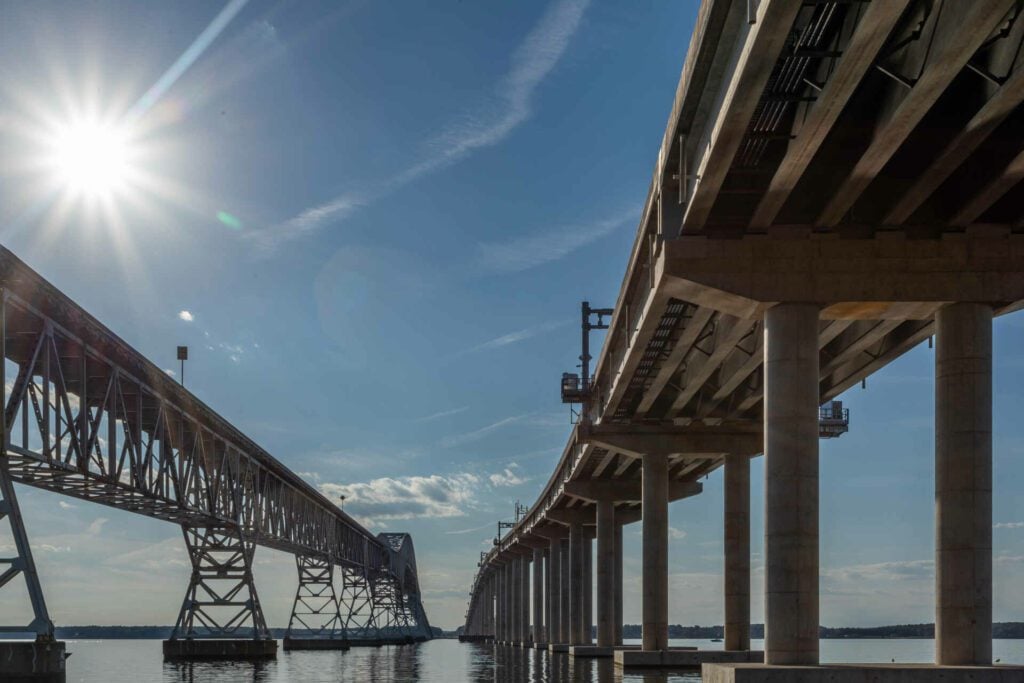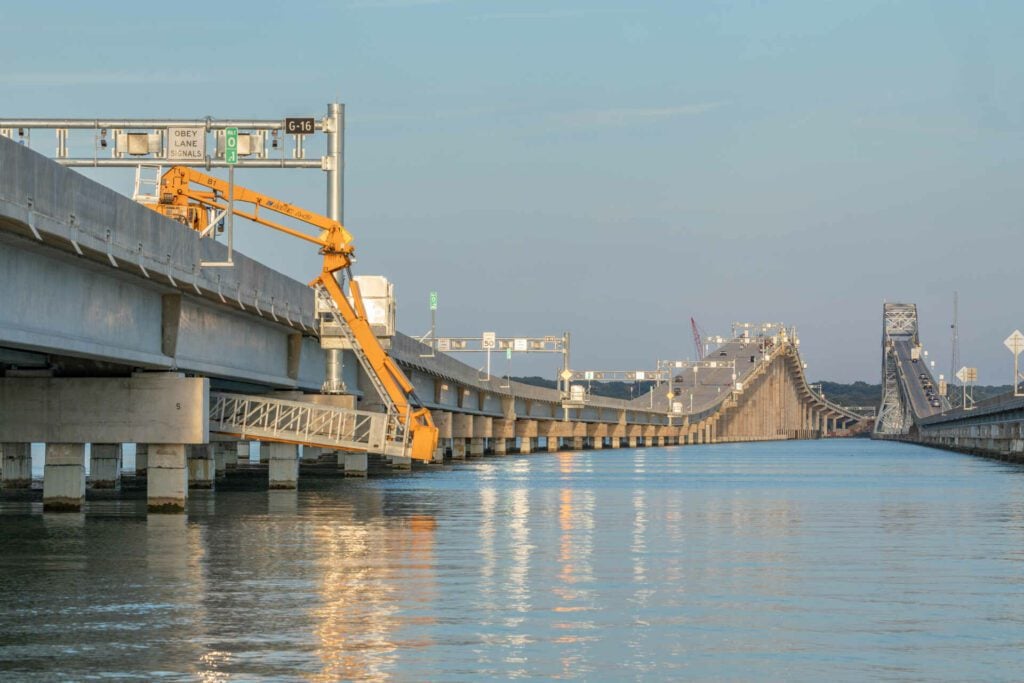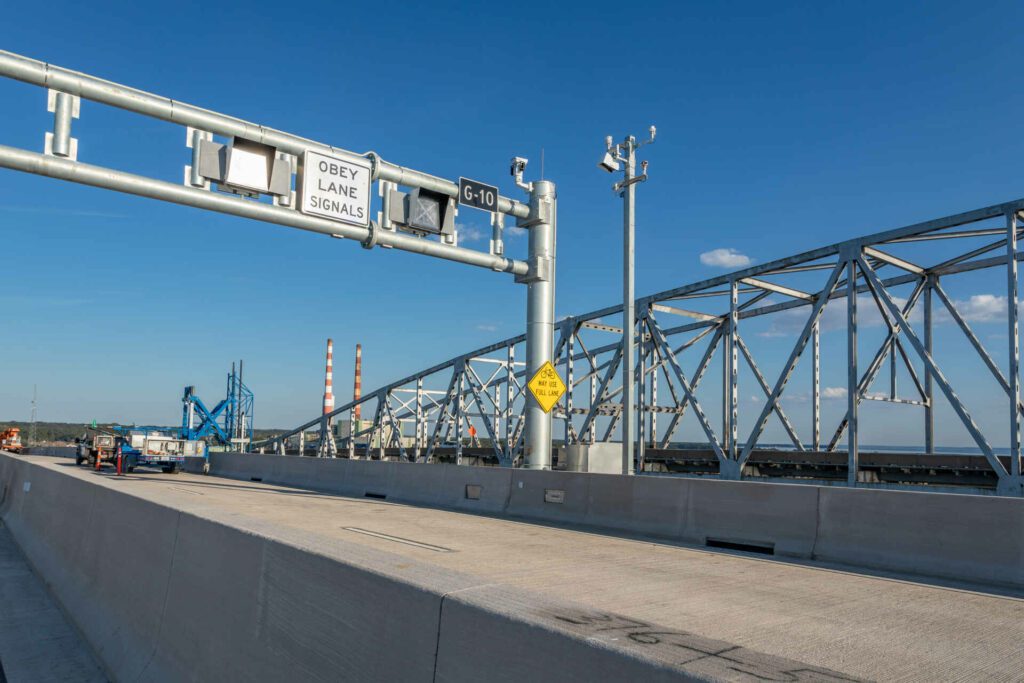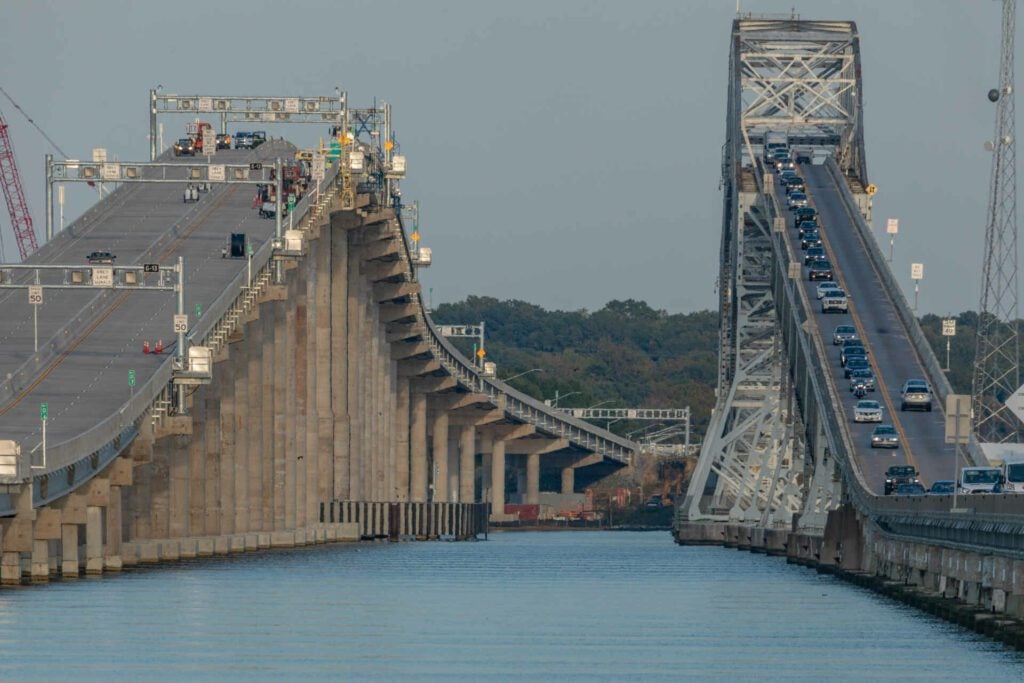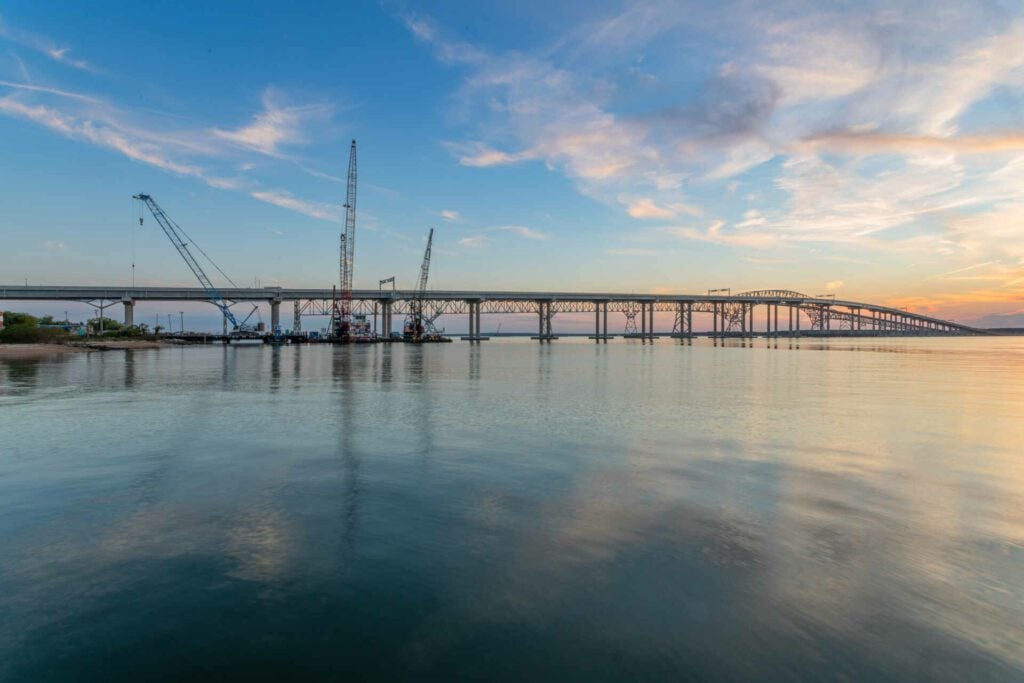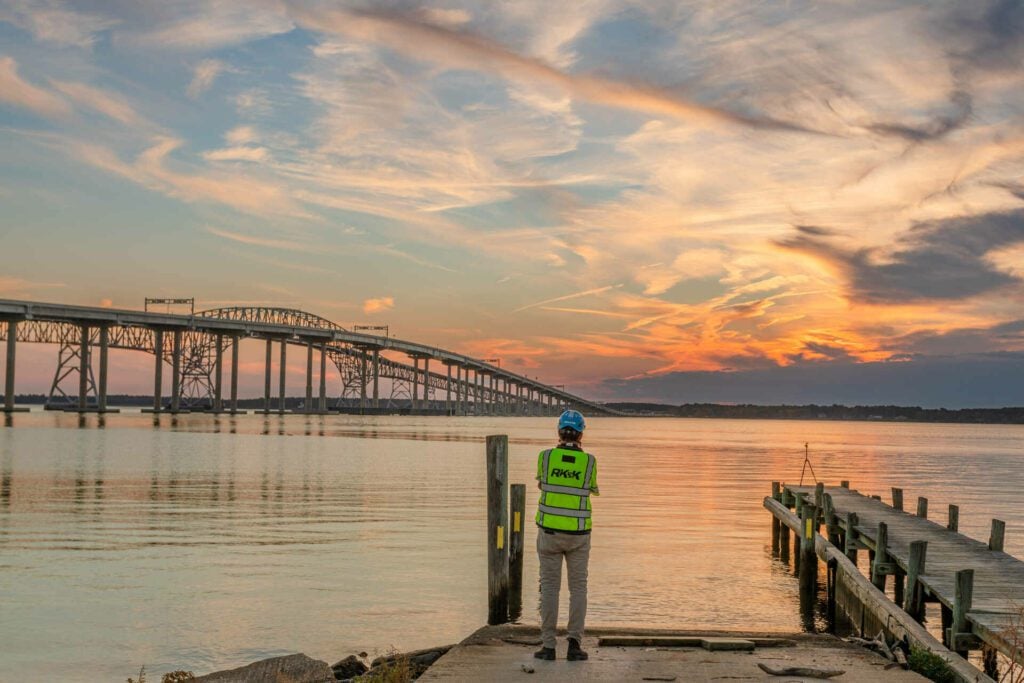The wait is over for travelers in the Chesapeake Bay region who were seeking a modern transportation solution.
On Wednesday, Maryland Governor Larry Hogan joined the Maryland Transportation Authority (MDTA) and community leaders for a ribbon-cutting of the new Governor Harry W. Nice/Thomas “Mac” Middleton Bridge over the Potomac River. The $463 million design-build replacement located on U.S. 301 was completed months ahead of schedule and connects Charles County in southern Maryland and King George County in northeast Virginia.
Today, we delivered to Marylanders and Virginians a wider, safer, and better Potomac River Crossing on US 301. The new Nice-Middleton Bridge represents what is possible when we work together across all levels of government to get big things done. pic.twitter.com/3unxETa4sc
— Governor Larry Hogan (@GovLarryHogan) October 12, 2022
“I want to thank all of the crews and construction workers, and every single one of the men and women who worked day in and day out—including during the COVID pandemic—to deliver this incredible new structure on budget and ahead of schedule,” said Governor Hogan.
RK&K, in a joint venture, provided comprehensive construction management, inspection, and support services for the new 1.9-mile bridge. Construction on the new span began in July 2020, and it replaces the original two-lane bridge, built in 1939, which carries more than 18,000 vehicles daily.
The new bridge doubles the vehicle capacity, with four 12-foot-wide lanes with two-foot shoulders. Safety was improved with a barrier-separated median between the southbound and northbound lanes. Lane-shifting safety issues were also addressed by replacing toll booths with all-electronic tolling (AET). The span also will be able to accommodate tall vessels under its 135-foot clearance.
RK&K’s CMI services for the replacement bridge included roadways, pavement, grading, embankments, retaining walls, utility relocations, stormwater management, drainage, erosion and sediment controls, trestle/causeway and staging area construction, signing, markings, traffic barrier, geotechnical testing, IT and electrical systems, and the use of multiple barge-mounted cranes.
We are honored to be a part of this morning’s grand opening of the new Nice Middleton Bridge along with @GovLarryHogan and @TheMDTA. #WeAreRKK #RKKProud pic.twitter.com/DvkFIUZ47Q
— RK&K: Celebrating 99 Years (@WeAreRKK) October 12, 2022
“Our inspection team worked side-by-side day and night with the contractor in very difficult conditions to make sure the completed bridge met the 100-year design life,” said Construction Management Director Lee Yowell, PE, CCM.
The bridge inspection team monitored the construction of precast concrete (piles/footings/pier caps) installations, cast-in-place (CIP) concrete for columns, abutments and superstructure bridge deck, parapet and approach slabs, and re-steel for all CIP concrete.
“Our inspection team worked side-by-side day and night with the contractor in very difficult conditions to make sure the completed bridge met the 100-year design life.”Lee Yowell, PE, CCM | Director
Our roadway inspection team monitored the embankment fill for the bridge approach including wire wall installation, installation of GAB and asphalt for the final roadway surface, and installation of pavement markings for the roadway.
Other project aspects included the inspection of all sign structure work including CIP structure concrete and re-steel, and the ITS/electrical elements.
The inspection team used an innovative GPS rover and survey model to verify construction grades accurately and efficiently even in a difficult marine inspection environment. RK&K also deployed drones to take high-resolution imagery photographs of the concrete substructure elements after they were completed. Combining those images together to create a 3D mesh image allowed inspectors and engineers to check for concrete surface deficiencies in a time-saving manner.
RK&K also utilized a new application called Binni to document and track concrete pours and concrete test results faster. With the app, inspectors were able to obtain copies of tickets wirelessly to avoid unnecessary contact between the drivers and inspectors, which was extremely important during the height of the COVID pandemic.
Our involvement with the project also included completing the NEPA documentation. Our responsibilities included environmental activities during the planning and preliminary engineering phases, including evaluation of effects on resources, impact on historic properties, and receiving community input
“We successfully navigated the complex environmental issues on both shores of the Potomac River, as well as the extensive agency coordination and negotiations that were required with local, state, and federal agencies,” said Project Delivery Leader Erron Ramsey, AICP.
The new span will open to traffic on Thursday. The original bridge is set to be demolished, with some of the materials to be used to create an artificial reef.
“Working for MDTA was truly a great experience. We are excited to see traffic on the new bridge and look forward to helping MDTA with the demolition of the old bridge,” Yowell added.
